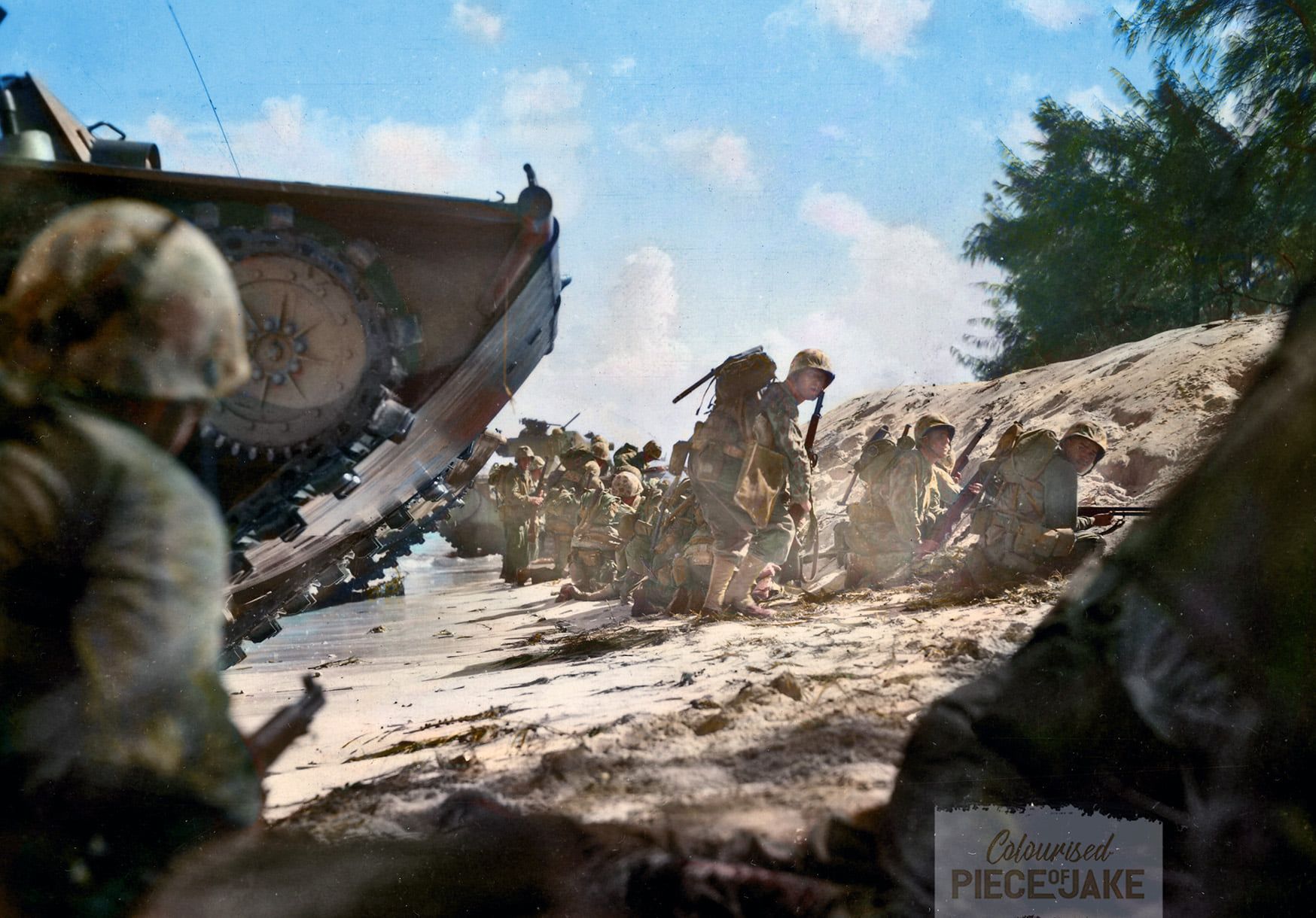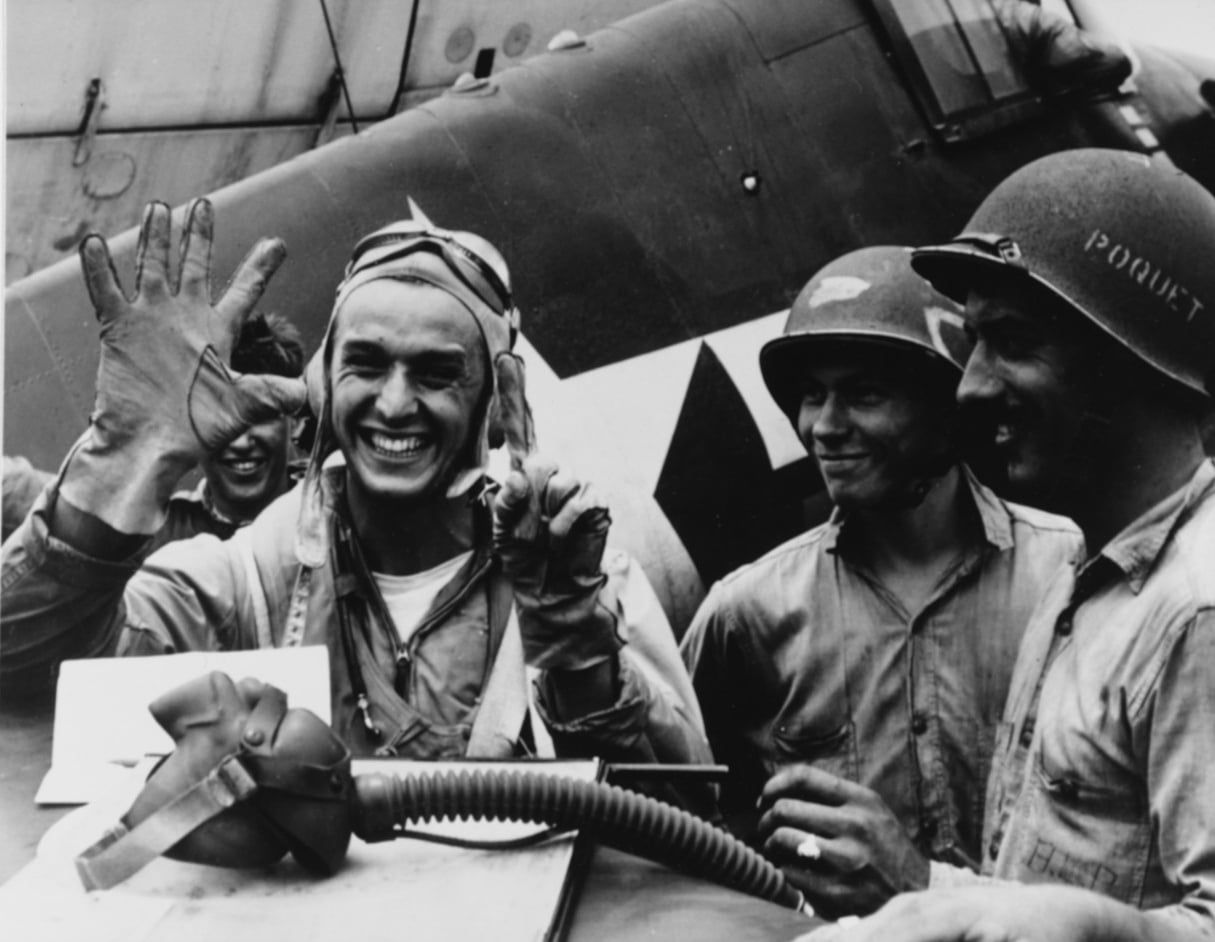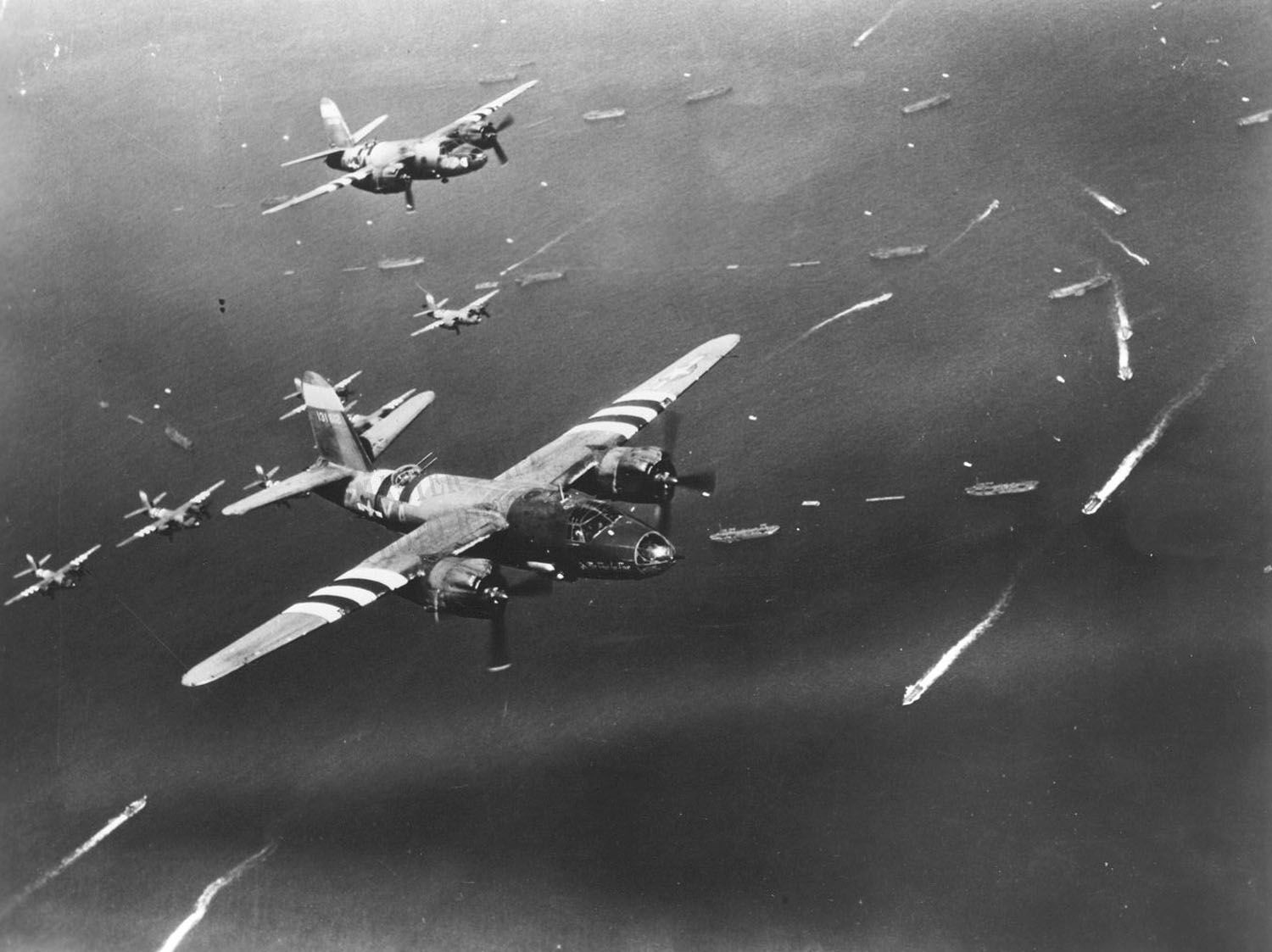Rommel plays with Minatures for D Day
https://www.youtube.com/watch?v=rRuzjs9T_dw&t=29s
On this day during W.W. 2
-
I think timidity is harsh…there are plenty of examples where the IJN took a ton of chances just to get to the battle, and then refused to take even more chances to seal the victory (transports at guadalcanal, savo island, samar). In retrospect, a 3rd PH wave wouldn’t have slowed the US much despite the great stories about how it would have crippled them, and its not impossible for the US to have staged an impromptu CV counterambush on the PH fleet…since the US set up devastating carrier ambushes at almost every major later battle, his concerns were pretty legitimate.
-
I was admittedly oversimplifying things when I described Nagumo’s decision as timidity. The situation was more complicated than that. Nagumo went into the Pearl Harbor attack fully anticipating (and, to his credit, being mentally prepared for) the possibility that his task force would suffer heavy losses. When the operation ended up going fantastically well – two successful aircraft waves inflicting heavy damage to the enemy with minimal losses of their own, and with no counterattack against his ships – he found himself in the position (as one author put it) of a man who was running at a door to bash it in with his shoulder and who ended up having the door unexpectedly opened for him at the last moment. He went from being prepared lose a couple of his carriers to wanting to preserve his task force from harm…and indeed, he got all his ships back to Japan without even a scratch in their paint. Unfortunately, it was the wrong call. Nagumo had been chosen for the job because he had seniority, not because he was an aggressive commander; he dutifully did what he’d been ordered to do, but he didn’t go further.
There’s a scene in the movie Tora Tora Tora where Nagumo argues to his air commanders (who were pleading for a third strike, this one targeting Pearl Harbor’s fuel depots and shipyards) that the war is going to be long and hard and that Japan must keep its precious carriers intact for that protracted struggle. I don’t know if the scene is historically factual or not. Nagumo does have a point when he says that in the film, but he’s also missing a counterpoint: even at the risk (which we now know would have been minimal, though he had no way of knowing it) of his task force being found and attacked the the Americans, a strike against the tank farms and dockyards would still have been worth it. The combat-focused Japanese military had a surprisingly poor understanding of the importance of logistics and infrastructure…something that you can get away with in a short local war, but not in a long one (especially against the most industrialized nation on earth) across vast oceanic distances.
-
@CWO-Marc We’d probably agree that the IJN combined some incredible moxy with some uncharacteristic reluctance and reticence. We didnt bring up fog of war, the Japanese captains didn’t know where the US CVs were and so in their imaginations, US counterattacks were always lurking or looming (and many times, they actually were).
While it wasn’t the main factor early on in the war, the US had broken the Japanese codes and had functional radar, very long range planes and incredibly detailed information and plans (yamamoto ambush) and other unknown technologies–I personally think that this led the Japanese to paranoia as US ships and planes kept showing up at the most inopportune times. Even when this was coincidence or luck, the IJN understood that the Americans had superior abilities and thus were always looking over their shoulders even if they never fully understood (as we do in retrospect) that the Americans had often previewed Japanese plans and set up devastating ambushes that might have appeared lucky, and with some elements that were indeed pure luck (Midway, Coral Sea, the Slot)
-
@taamvan said in On this day during W.W. 2:
While it wasn’t the main factor early on in the war, the US had broken the Japanese codes and had functional radar, very long range planes and incredibly detailed information and plans (yamamoto ambush) and other unknown technologies–I personally think that this led the Japanese to paranoia as US ships and planes kept showing up at the most inopportune times.
And interestingly, the Japanese also suffered on at least one occasion – at Midway – of what could be called anti-paranoia, which was to assume that the Americans would obligingly follow the timeline which Japan had scripted for them. Their Midway operation did not include any contingency plans to deal with the possibility that one or more American carriers might inconveniently show up ahead of schedule…so when that actually happened, Nagumo had to improvise on the spot (and do so in the absence of adequate information, a problem that haunts every military commander) and the operation started falling apart. It didn’t help that the Japanese were trying to accomplish two contradictory things at once: conducting an amphibious landing, an operation which needs to be carefully coordinated and which needs to take into account such immutable factors as the tides, and destroying a mobile enemy carrier force, an operation which involves many unknowns and which requires a high degree of flexibility. Their concept was built around a “First A, then B” scenario, but they ended up facing an A+B scenario.
I’ve sometimes wondered how Midway would have turned out if Yamamoto had dispensed with the diversionary Aleutian operation and instead had assigned the light carriers Junyo and Ryujo to augment Nagumo’s main carrier group. This would have given him added reconnaissance capabilities, a reserve attack force, and a bigger combat air patrol to protect his fleet from enemy fighters.
-
Christmas day at Bougainville
A group of RNZAF airmen are being served Christmas dinner by their superior Officers, as is traditional at Christmas time.
Christmas day, 1944
The man serving the drink (extreme right) is Laurie Counsell.
RNZAF Official photo
Colourised by Daniel Rarity
-
June 13 1944

-
@captainwalker thanks for blowing my trumpet. June 13th was my finest day as a tank commander. I missed the anniversary!
-
A Japanese plane shot down as it attempted to attack a group of carriers, near the Marianas Islands in the Pacific, 13-17th June 1944.
Photo taken from the escort carrier USS Kitkun Bay (CVE-71)
-
Saipan Landing, 15 June 1944
“The first wave of Marines to hit the Saipan beach, take cover behind a sand dune while waiting for supporting waves to land and start the drive inland.”
From the Photograph Collection (COLL/3948), Marine Corps Archives & Special Collections(Colourised by Jake) Colourised PIECE of JAKE

-
in 1944, “The Great Marianas Turkey Shoot” began during the Battle of the Philippine Sea. U.S. pilots and A.A. gunners destroyed 600+ enemy aircraft. Flying a Grumman F6F Hellcat, Navy ace Lt. Alex Vraciu shot down 6 dive bombers in 8 minutes. Vraciu only used 360 rounds of ammunition, which is a remarkable feat of marksmanship.

https://www.bing.com/videos/search?q=marianas+turkey+shoot&view=detail&mid=D04282C90FE61AE8DC68D04282C90FE61AE8DC68&FORM=VIRE -
U.S. Navy aircraft carrier USS Bunker Hill (CV-17) is near-missed by a Japanese bomb, during the Battle of the Philippine Sea on 19 June 1944. The Japanese plane, with its tail shot off, is about to crash, at left.

-
OPERATION ‘BARBAROSSA’
The invasion of the Soviet Union, June 1941
Operation ‘Barbarossa’ - named after the all-conquering Medieval Holy Roman Emperor Frederick I - was launched on 22 June 1941. Over three and a half million German and other Axis troops attacked along a 1,800-mile front. A total of 148 divisions - 80 per cent of the German Army - were committed to the enterprise.
Seventeen panzer divisions, formed into four Panzer Groups, formed the vanguard with 3,400 tanks. They were supported by 2,700 aircraft of the Luftwaffe. It was the largest invasion force to date.
(Colors by Irootoko jr., Royston Leonard, Richard Molloy)

-
Formation of Martin B-26Bs, taken June 26, 1944. Closest aircraft is B-26B-15-MA (S/N 41-31612). Note the invasion stripes. (U.S. Air Force photo)

-
24 July 1944 - Battle of Tinian D-Day
T
The 4th Marine Division conducts an amphibious assault on the northwest coast of Tinian, while the 2d Marine Division makes an amphibious assault in the south.The Japanese conducts a major banzai attack against the beachhead that evening and suffered severe losses. In eight days Marines reach the southern coast of Tinian and all organized Japanese resistance is finished.
-
On July 30 1945, USS Indianapolis CA-35 was struck by two torpedos from a Japanese submarine, having the ship sink within twelve minutes. After 4 days the Navy spotted survivors from this terrible tragedy. Out of 1,195 crew members, 316 had survived and been rescued.

-
@captainwalker yea major tragedy
-
During Operation Pedestal which lasted 12 days between 3–15 August 1942 some 48–60 AXIS aircraft were destroyed, during the daring Operation to resupply Malta which was an absolute vital outpost in the Mediterranean Sea Theatre which lay under siege from June 1940 to November 1942
https://www.facebook.com/War1982/videos/368937704652665 -
13th August 1944
Le Pleiss Grimoult, NormandyMajor Sir Robin Leigh, second-in-command Sherwood Rangers, poses beside the much photographed ‘Königstiger’, or King Tiger, said to have been knocked out by an infantry mortar round that landed in the turret.

-
On this day in history … August 14, 1945
V-J Day in Times Square, the iconic photograph by Alfred Eisenstaedt, which was published in ‘Life’ magazine in 1945 with the caption, “In New York’s Times Square a white-clad girl clutches her purse and skirt as an uninhibited sailor plants his lips squarely on hers”
Greta Zimmer Friedman, identified later as the ‘nurse’ in the photo, became the subject of perhaps the most iconic photo taken on V-J Day on Aug. 14, 1945. The photo caught the U.S. at a moment of pure relief and represented people letting go of their inhibitions, it captured the jubilance people felt upon the war’s end.
Greta Friedman was a 21-year-old dental assistant, out in Times Square when news of the war’s end broke. George Mendonsa (still alive at 94 ?), who in 2015 confirmed he was the man in the photo, saw Friedman for the first time, spun her around and kissed her.“It wasn’t that much of a kiss,” Friedman, who came forward as the woman in the photo years later, said in a 2005 interview with the Veterans History Project. “It was just somebody celebrating. It wasn’t a romantic event.”
Greta Friedman died at age 92 on September 8, 2016
or was it … Glenn McDuffie, a US Navy veteran who also claims to have kissed the nurse in the photo passed away on March 9, 2014, aged 86
Photographer Alfred Eisenstaedt died on August 23, 1995 (aged 96)
Colorized by Sanna Dullaway

-

August 21, 1942: German soldiers on Mount Elbrus, Europe’s tallest mountain. This was about as far as the German army would reach in the Caucasus. And the feat itself didn’t work wonders in German propaganda: Hitler was livid when he heard about it and thought it was a complete waste of time.
See https://europebetweeneastandwest.wordpress.com/2014/10/06/hubris-arrogance-on-europes-everest-mt-elbrus-a-metaphor-of-german-defeat-in-the-east/ for a recounting of this story.






